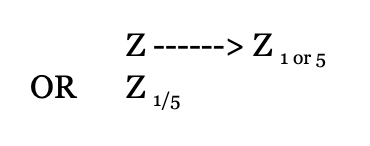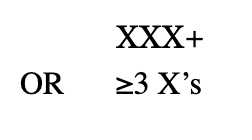In this post, I will briefly introduce the importance of one fundamental skill for answering logical games with speed and accuracy: personalizing and utilizing a shorthand language for facts and rules from the stimulus. The Logical Games section of the LSAT tests our ability to understand, apply, and manipulate rules based on a set of facts. Accordingly, the first step to approaching any logical game is to utilize some sort of methodology for writing out the facts and rules. This methodology is a kind of shorthand that will allow us to approach each new question in the game without having to re-read the stimulus and rules. If used correctly, we can save time and increase our focus.
Possible setbacks
A common struggle with shorthand is that, especially as we confront unfamiliar games, we forget what we mean by a certain symbol, or our own shorthand is ambiguous or not easy to apply to the questions, or the shorthand leaves out important information. And what does this result in? We lose precious time as we seek clarification by re-reading the stimulus and rules, by editing our shorthand after already having written it out, or by abandoning the shorthand altogether.
Key components
When devising our own shorthand or applying the preferred method that we learned from another preparatory courses, we need to ensure that we are accomplishing a few things:
- writing the facts/rules in a way that is unambiguous and easy-to-remember, allowing us to use our shorthand as a quick reference guide that we can glance at. This increases speed and focuses our attention more on the application of the rules. For example, if given a rule like, if Z is on a team then Z can only be on team 1 or 5, we could write this as,

Note, however, that the second option is possibly more ambiguous. At a glance, it could be interpreted as a rule stating, Z must be in either position 1 or 5. We need to make sure that the symbols we use are clear to us and account for nuances in the rules.
- capturing the strictness or flexibility of the fact/rule, which makes it easier to perform a process of elimination for answer choices that interpret the facts/rules with excessive strictness or flexibility and helps us avoid careless errors. For example, if given a rule like, X is on at least three of the five teams, we could write this as:

- incorporating the shorthand into the template we’re using for a given game, so that we don’t forget to apply a rule as we figure out whether a certain answer choice is possible. For example, if given a conditional statement like, if X is on team 3 then Y is on team 4, we would write this as:

Rather than: Note that in the first example, the conditional statement is directly above the template, which makes it visually easier and quicker to read.
Note that in the first example, the conditional statement is directly above the template, which makes it visually easier and quicker to read.
Moving forward
Shorthand is certainly a new concept for those just beginning their LSAT studies, but once we have found a method that works for us, we can save time and avoid careless errors. Although shorthand might be second-nature to those experienced in logical games, it is essential that the methodology is efficient; that is, easy-to-read, quick to write down, accurate, and flexible when necessary. With an effective shorthand we can ensure that, as we review the incorrect answers of our next practice test, we won’t have to say: Oh no, I completely forgot that rule!

Comments